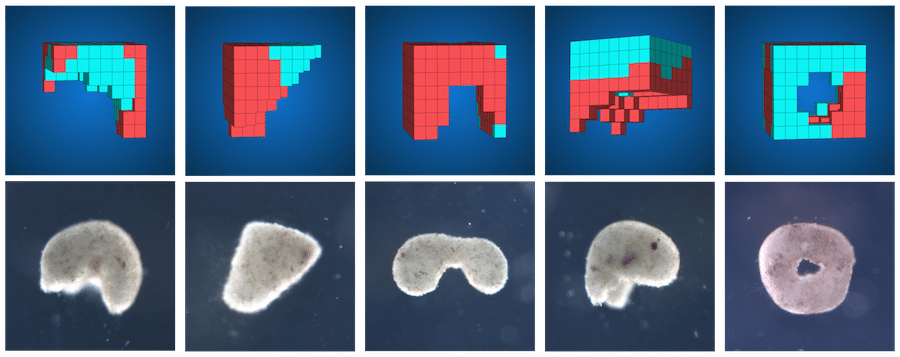Our readers know how, by now, the advances of technology are surpassing what until a few years ago were the fervent fantasies of novelists and filmmakers.
If it is true that flying taxis, for example, will populate our skies in the near future, Blade Runner will no longer be science fiction but reality.
Now let’s go a little further: xenobot was created, the first robot capable of building itself. Despite their rather obvious resemblance to Pac-Man, the small robot-organisms capable of replication open up new scientific horizons, even more than technological ones.
What do we know about xenobots? Who and why created them? What will their scope of use be?
Let’s try to answer all these questions.
What are xenobots
We must immediately explain the astonishing definition, according to which xenobots are robots capable of replicating themselves.
The name, as often happens, helps us not a little to extricate ourselves. Let’s start from the second and easier part, the suffix “-bot” which stands for “robot”, the technological part of xenobots.
The prefix “xeno-” (which in Greek means “foreigner”, just think of the sadly current adjective “xenophobic”) instead identifies a type of frog. Yes, you got it right, Xenopus laevis, from whose cells the amazing xenobots were made. It is a type of frog often used as an animal model in biology.
The xenobots appear as spheres that closely resemble the mythical Pac-Man. They have a diameter of a few millimeters and are able not only to move independently, but also to reproduce on their own.

The project
The news is very fresh, but in reality the project was started by a team of the two US universities of Vermont and Tuft already two years ago. Harvard University was then added to the initial research project.
One of the four coordinators of the study, Michael Levin of the University of Tuft, had explained at the time that “the DNA of the created organism is 100% that of the frog but it is not a frog. They are neither traditional robots nor new animal species ”.
Xenobots are therefore a new class of artifacts, but at the same time living and programmable organisms. In fact, the contractions of their heart muscle produce movements, which are in line with what was defined in the design phase.
How xenobots were created
The xenobots were designed with computers from the University of Vermont, and then assembled and tested at the University of Tuft.
Once taken from the frog embryos, the stem cells were separated, grown and multiplied in the laboratory. Then the research team modeled and assembled them, thus creating cells with a shape that does not exist in nature, but capable of working together. And that is to move, to incorporate other cells and above all to self-replicate.
Cell replication
One of the objectives of the xenobot project is precisely to study the movement made by cells to reproduce. And above all to progress in the fascinating (and perhaps even a little disturbing) realm of self-replication.
Supercomputers at the University of Vermont employed an artificial intelligence algorithm capable of testing billions of possible cell configurations. And they even identified the ideal shapes that allow us to observe the replication of cells.
Areas of use
Josh Bongard, computer scientist and robotics expert at the University of Vermont, explains what xenobots can do, also at the head of the project. Bongard said: “If we can develop technologies, learning from xenobots, so we can quickly say to artificial intelligence: ‘we need a biological tool that produces X and Y and eliminates Z’, this could be of great benefit. Today, this process takes a very long time ”.
Then the computer scientist specified: “It is a step towards the use of computer-created organisms for the intelligent delivery of drugs.”
Xenobots could also be used to remove microplastics from the seas. And in regenerative medicine, to restore damaged or malfunctioning tissues.
The ethical implications
It goes without saying that similar hybridizations between living organisms and robots can make you turn up your nose. It is not so much the xenobots that are frightening, as much as possible future implications of a very different magnitude.
But Michael Levin said: “This fear is not unreasonable. Precisely this study provides a direct contribution to better understanding what people are afraid of, or the unwanted consequences “.
That is: by manipulating complex systems that are not known, it is possible to have undesirable effects. This is why we start by working on simple systems.
Sara. But anyone who has seen Blade Runner can’t help but have some minor perplexities.















Leave a Reply
View Comments